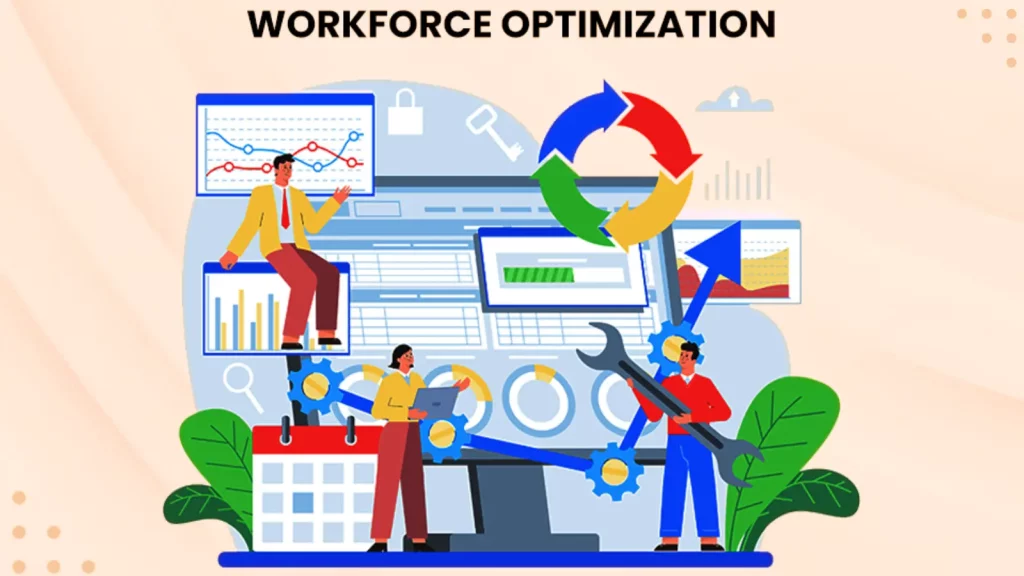How Workforce Optimization Supports Business Continuity Planning
How Workforce Optimization Supports Business Continuity Planning
Blog Article
Optimizing Workforce Planning in the Gig Economy
In today's fast changing job market, understanding workforce preparing in the show economy is more necessary than ever. The rise in freelance function and short-term agreements has converted how businesses perform and control their individual resources. This short article may manual you through the techniques for workforce optimization likely to thrive in the job economy.
Knowledge the Gig Economy Landscape
The show economy shows a labor market indicated by the prevalence of short-term contracts or freelance work as opposed to permanent jobs. That shift has generated equally opportunities and challenges for organizations trying to remain agile and competitive.
Companies may faucet in to a flexible talent share, allowing them to scale up or down quickly. However, handling a more liquid workforce requires powerful planning and new strategies to make sure efficiency and productivity. Recognizing these makeup may be the first step toward powerful workforce optimization.

Benefits of a Variable Workforce
Among the primary features of the show economy is the flexibleness it offers. Companies can adapt to promote demands without the long-term responsibility of lasting hires. That mobility may lead to price savings and increased challenge management.
Moreover, freelancers and gig personnel frequently carry specific abilities and new perspectives to projects. Leveraging that ability may result in impressive solutions and improved support offerings for clients. Knowledge these advantages helps in appreciating the worthiness of a well-planned show workforce.
Difficulties in Managing Job Individuals
Despite its advantages, managing a concert workforce is sold with unique challenges. Issues such as contradictory perform quality, insufficient loyalty, and different quantities of staff involvement may affect productivity.
To deal with these challenges, companies should create obvious communication routes, collection objectives, and give necessary help to job workers. Employing these methods can mitigate potential risks of a non-traditional workforce.
Proper Workforce Planning
Proper workforce preparing involves anticipating future skill needs and preparing to generally meet these needs efficiently. In the context of the show economy, this implies distinguishing which tasks can be filled by job individuals and which involve permanent employees.
Organizations must create a balanced method that leverages a mix of gig workers and full-time staff. That technique assures that primary operations remain stable while allowing for mobility in project-based tasks.
Leveraging Technology
Engineering represents a critical role in optimizing workforce planning. Systems such as for example Upwork, Fiverr, and Freelancer facilitate the hiring of gig employees, while methods like Trello and Slack increase project management and communication.
Buying the proper engineering solutions may streamline the procedure of recruiting, onboarding, and controlling job workers. That, consequently, enhances over all productivity and functional efficiency.
Developing a Helpful Ecosystem
Creating a loyal environment for job employees is crucial for long-term success. This requires providing use of essential resources, giving teaching options, and fostering a feeling of community.
Firms that purchase the well-being and growth of their job personnel are more likely to attract top talent and maintain high degrees of engagement. This helpful approach also can improve the standing of the business within the gig economy.
Legal and Submission Factors
Moving the legitimate and submission landscape is essential when managing gig workers. Businesses must guarantee they stick to applicable job laws and regulations to prevent potential legitimate issues.
It is important to remain knowledgeable about improvements in legislation which could influence job personnel and to apply guidelines that protect both the organization and their workforce. That proactive strategy may reduce costly legitimate problems down the line.
Calculating Performance and Production
Measuring the efficiency and production of gig individuals is critical for continuous improvement. Businesses must create key performance indications (KPIs) and often evaluate the share of job personnel to projects.
Regular feedback and performance reviews might help identify places for improvement and realize high-performing individuals. This data-driven strategy guarantees that workforce planning stays arranged with business objectives.
Increasing Staff Wedding
Diamond is a important component of workforce preparing in the show economy. Businesses should find ways to keep show workers inspired and connected to their work.
Giving incentives, knowing achievements, and promoting open connection may enhance proposal levels. Engaged individuals are more likely to deliver high-quality perform and lead really to the company's success.

Future Tendencies in the Show Economy
The job economy is continuously changing, with new developments and technologies surrounding their future. Keeping abreast of these developments is essential for powerful workforce planning.
Emerging styles such as remote perform, AI-driven employment, and blockchain-based evidence methods are set to revolutionize the show economy. Firms that adjust to these changes is going to be better positioned to capitalize on new opportunities.
Realization
Optimizing workforce planning in the gig economy is a multifaceted method that needs proper thinking and a proactive approach. By knowledge the landscape, leveraging technology, and fostering a loyal environment, companies may efficiently control their job workforce and reap the benefits of this dynamic work market.
For those thinking about further increasing their workforce planning strategies, consider discovering extra methods and tools obtainable in the market. By repeatedly improving your approach, you are able to ensure maintained accomplishment in the changing show economy.
Report this page